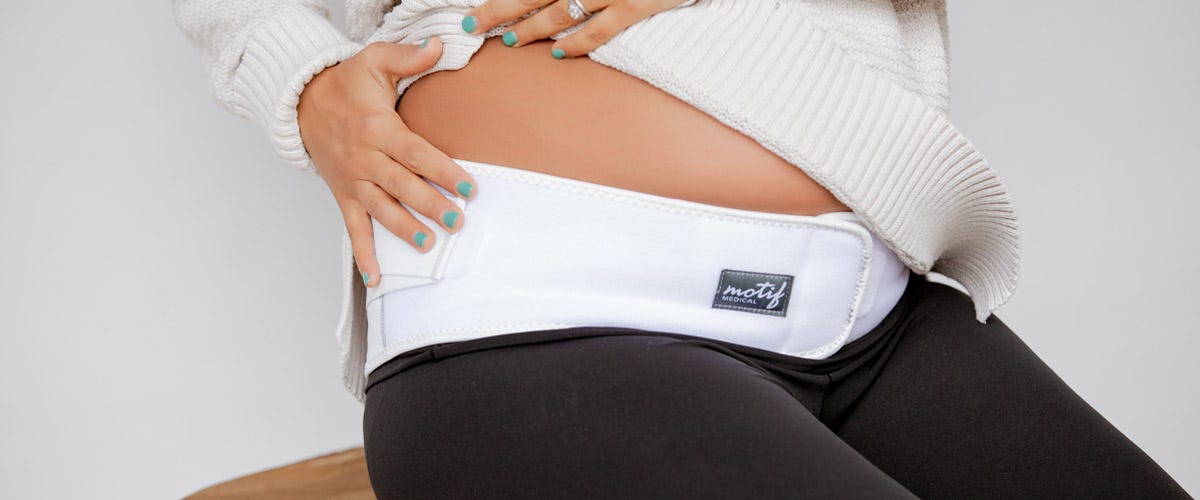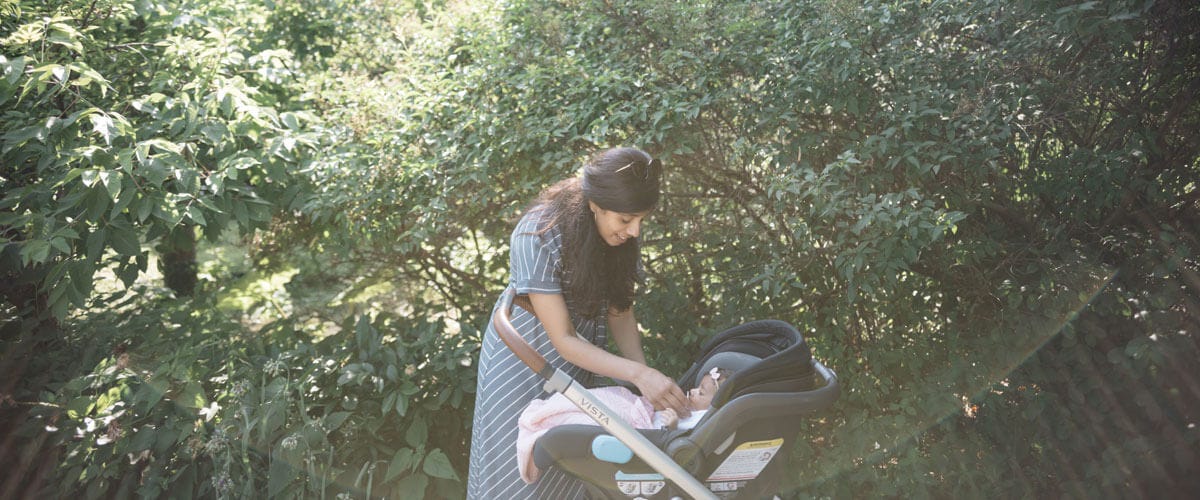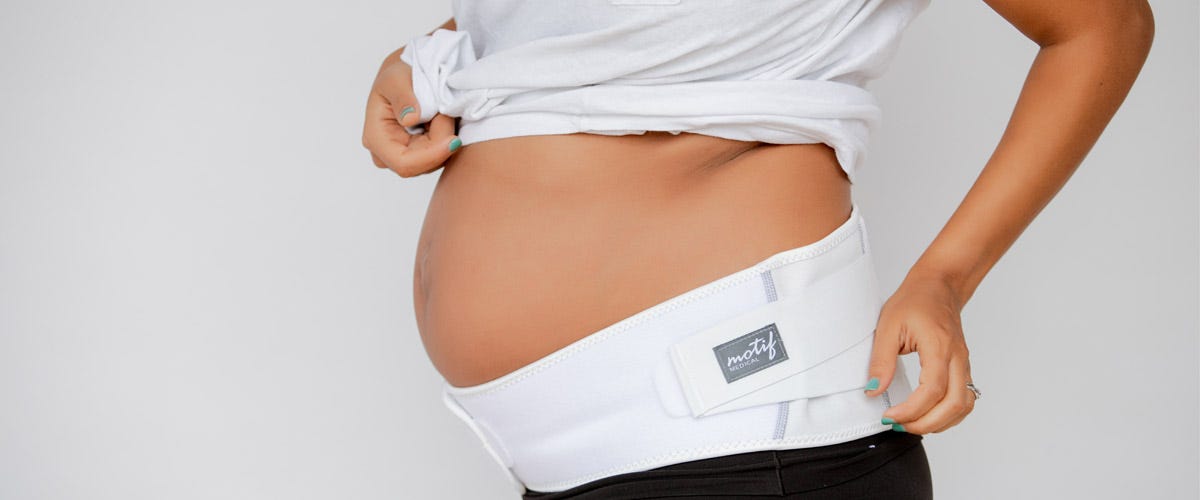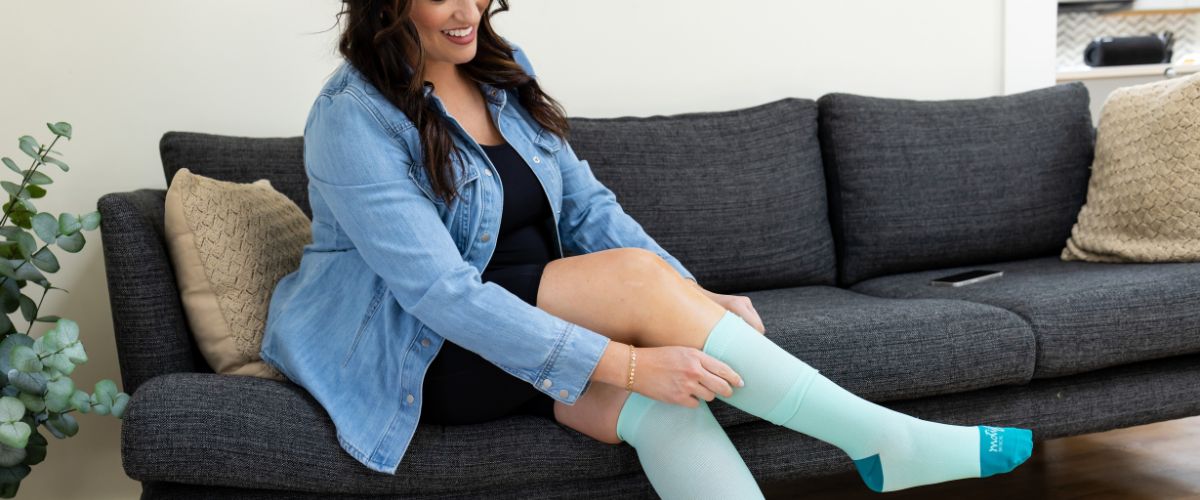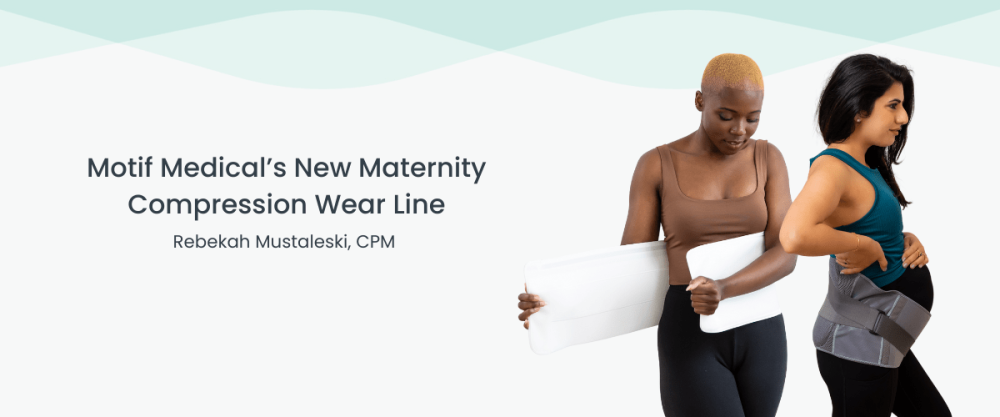What Exactly is Maternity Compression?
So you’ve heard that you may qualify for maternity compression through insurance, but what exactly is maternity compression? They’re your new secret weapon as an expectant or recovering mom.
To be specific, maternity compression garments are medically designed by experts to provide support, relief, and stabilization for increased comfort during pregnancy and to assist with postpartum healing. It’s no secret that pregnancy takes a toll on your body, but maternity compression is able to target specific areas to help you stay on your feet during pregnancy and recover after giving birth.
There are three main types of maternity compression garments that may be recommended by your doctor depending on your individual needs and whether you’re expecting or postpartum.
1. Pregnancy Support Band
- As your body transforms during pregnancy to support the growing life inside of you, it can create pain and stability issues when your center of gravity is thrown off. As your baby and uterus grow, your abdomen are pulled forward, which can place more pressure on the curvature of your spine, resulting in back pain and increasing the risk for falls.
- Your abs stretch from the sternum to the pubic bone to act as a girdle that supports the core. As your baby grows, the abs may stretch apart and become weakened. This process is known as Diastasis Recti and causes your abdomen to be unable to fully support your core, placing more weight on your back, leading to lower back and hip pain that may get in the way of your everyday activities.
- The Sacroiliac Joint (SI) is also affected during pregnancy. It's the triangular joint that connects to the hip bone and is responsible for absorbing impact and stabilizing the pelvis. However, as the hormone relaxin increases during pregnancy to loosen the joint to prepare for birth and more pressure is placed on the curvature on the spine, the SI can’t do its job as well. This can result in nerve, back, and pelvic pains.
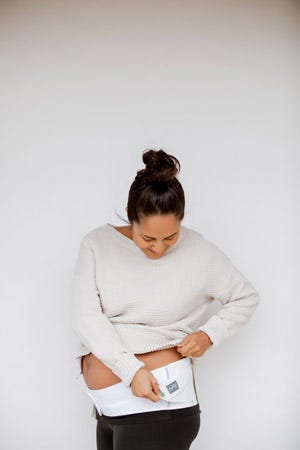
How Pregnancy Support Bands Can Help
Support bands are comprised of soft, breathable fabric that wraps around the waist and attaches via velcro to provide all natural pain relief and stability. They assist expecting mothers by providing gentle compression to help your body’s muscles and ligaments take on the extra weight, stabilize the joints, and promote better posture.
They are a safer alternative to expensive medications that may cross the placenta and affect the baby. Plus, medications tend to only provide temporary relief while maternity bands provide all-day relief.
Motif Pregnancy Belly Band
- Reduces pregnancy related discomfort
- Supports core muscles during daily activities
- Helps baby settle into optimal birth position
- Eligible for coverage through health insurance
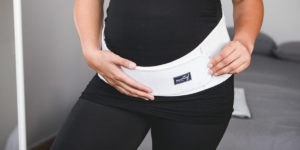
2. Postpartum Recovery Garments
- The pelvic floor may be weakened during pregnancy and delivery as the muscles and ligaments take on the extra weight of the growing fetus. The muscles and ligaments must also be flexible enough to stretch during delivery, otherwise, the muscles may not properly come back together, leading to prolapses, discomfort, and possible sexual dysfunction.
- Incontinence may occur because the pelvic floor is responsible for holding the vagina, uterus, bladder, and bowel. Once it stretches, in addition to birth trauma, the inability to hold urine and stools may occur.
- Plus, to prepare for the baby to pass through, perineal lacerations or tears may occur in the soft tissues the separate the vagina from the anus. With a severe tear, you may experience pain, difficulty performing normal daily activities, fecal urgency, or incontinence.
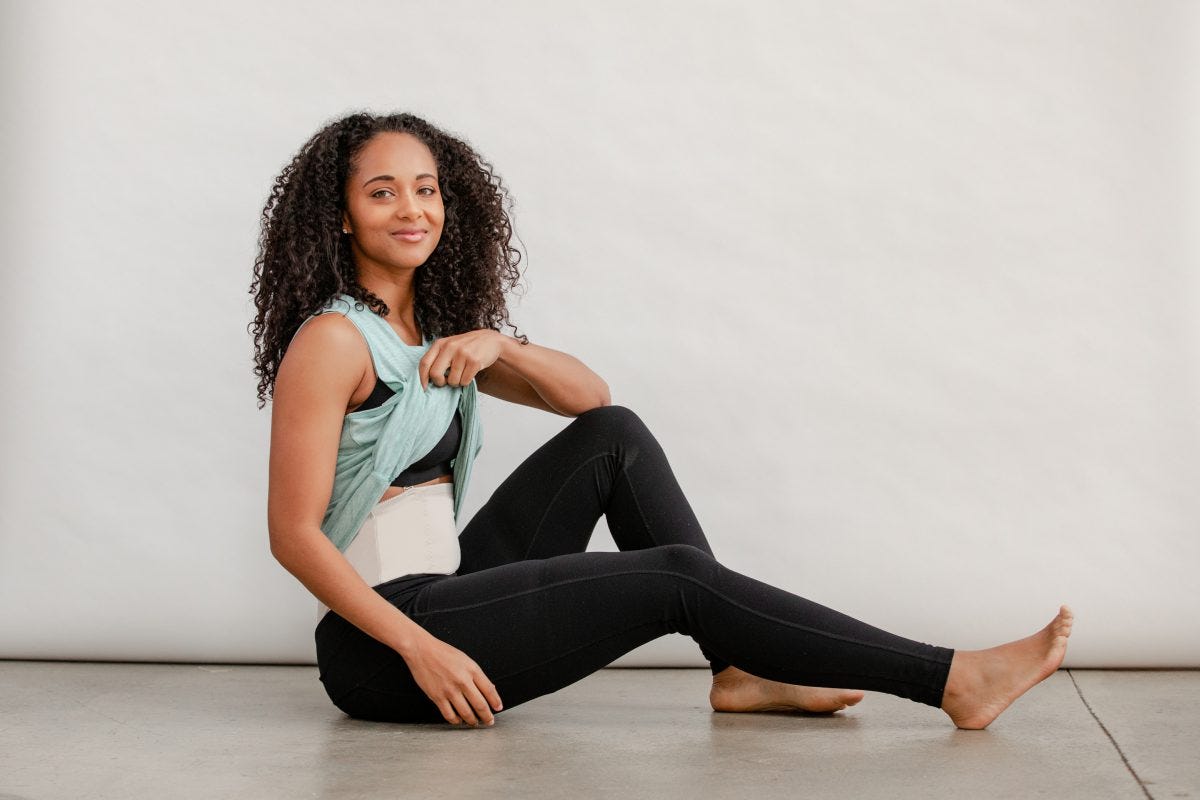
- There is also pain with C-sections as most mothers experience the same pregnancy-related issues as mothers with vaginal deliveries do. Only they experience an incision made at the pubic bone and have their abdominal muscles separated to access the uterus. Then after the delivery, the incision site may be sore, numb, painful, burn, or itch and activities such as lifting baby, coughing or sneezing can increase pressure on the incision site causing pain, burning, and making it take longer to heal.
How Postpartum Recovery Garments Can Help
Postpartum recovery garments are similar to maternity bands because they wrap around the waist, but they cover more area, going all the way up to the chest and include shorts to stabilize joints, reduce pain, and increase mobility.
By providing gentle support postpartum compression garments are able to reduce postpartum bleeding, swelling, aches, and pains, to increase comfort to help you get back on your feet and care for your infant. They also provide external support to c-section scars. Zippered garments are best for those who have had C-sections because they do not have to be dragged across the incision site when being put on.
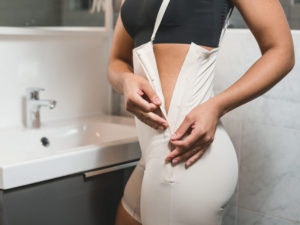
Motif Postpartum Recovery Garment
- Reduces swelling and postpartum bleeding
- Stabilizes the core to improve posture
- Seamless and comfortable under clothing
- Eligible for coverage through health insurance
What Exactly is Maternity Compression?
So you’ve heard that you may qualify for maternity compression through insurance, but what exactly is maternity compression? They’re your new secret weapon as an expectant or recovering mom.
To be specific, maternity compression garments are medically designed by experts to provide support, relief, and stabilization for increased comfort during pregnancy and to assist with postpartum healing. It’s no secret that pregnancy takes a toll on your body, but maternity compression is able to target specific areas to help you stay on your feet during pregnancy and recover after giving birth.
There are three main types of maternity compression garments that may be recommended by your doctor depending on your individual needs and whether you’re expecting or postpartum.
1. Pregnancy Support Band
-
As your body transforms during pregnancy to support the growing life inside of you, it can create pain and stability issues when your center of gravity is thrown off. As your baby and uterus grow, your abdomen are pulled forward, which can place more pressure on the curvature of your spine, resulting in back pain and increasing the risk for falls.
-
Your abs stretch from the sternum to the pubic bone to act as a girdle that supports the core. As your baby grows, the abs may stretch apart and become weakened. This process is known as Diastasis Recti and causes your abdomen to be unable to fully support your core, placing more weight on your back, leading to lower back and hip pain that may get in the way of your everyday activities.
-
The Sacroiliac Joint (SI) is also affected during pregnancy. It's the triangular joint that connects to the hip bone and is responsible for absorbing impact and stabilizing the pelvis. However, as the hormone relaxin increases during pregnancy to loosen the joint to prepare for birth and more pressure is placed on the curvature on the spine, the SI can’t do its job as well. This can result in nerve, back, and pelvic pains.
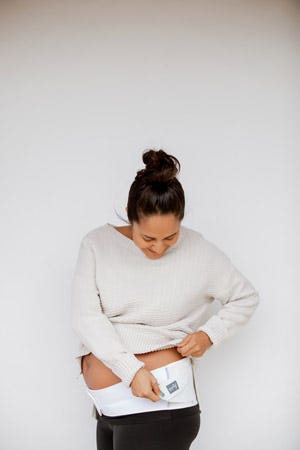

How Pregnancy Support Bands Can Help
Support bands are comprised of soft, breathable fabric that wraps around the waist and attaches via velcro to provide all natural pain relief and stability. They assist expecting mothers by providing gentle compression to help your body’s muscles and ligaments take on the extra weight, stabilize the joints, and promote better posture.
They are a safer alternative to expensive medications that may cross the placenta and affect the baby. Plus, medications tend to only provide temporary relief while maternity bands provide all-day relief.
Motif Pregnancy Belly Band
-
Reduces pregnancy related discomfort
-
Supports core muscles during daily activities
-
Helps baby settle into optimal birth position
-
Eligible for coverage through health insurance
2. Postpartum Recovery Garments
-
The pelvic floor may be weakened during pregnancy and delivery as the muscles and ligaments take on the extra weight of the growing fetus. The muscles and ligaments must also be flexible enough to stretch during delivery, otherwise, the muscles may not properly come back together, leading to prolapses, discomfort, and possible sexual dysfunction.
-
Incontinence may occur because the pelvic floor is responsible for holding the vagina, uterus, bladder, and bowel. Once it stretches, in addition to birth trauma, the inability to hold urine and stools may occur.
-
Plus, to prepare for the baby to pass through, perineal lacerations or tears may occur in the soft tissues the separate the vagina from the anus. With a severe tear, you may experience pain, difficulty performing normal daily activities, fecal urgency, or incontinence.
-
There is also pain with C-sections as most mothers experience the same pregnancy-related issues as mothers with vaginal deliveries do. Only they experience an incision made at the pubic bone and have their abdominal muscles separated to access the uterus. Then after the delivery, the incision site may be sore, numb, painful, burn, or itch and activities such as lifting baby, coughing or sneezing can increase pressure on the incision site causing pain, burning, and making it take longer to heal.
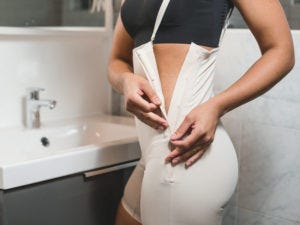

How Postpartum Recovery Garments Can Help
Postpartum recovery garments are similar to maternity bands because they wrap around the waist, but they cover more area, going all the way up to the chest and include shorts to stabilize joints, reduce pain, and increase mobility.
By providing gentle support postpartum compression garments are able to reduce postpartum bleeding, swelling, aches, and pains, to increase comfort to help you get back on your feet and care for your infant. They also provide external support to c-section scars. Zippered garments are best for those who have had C-sections because they do not have to be dragged across the incision site when being put on.
Motif Postpartum Recovery Garment
-
Reduces swelling and postpartum bleeding
-
Stabilizes the core to improve posture
-
Seamless and comfortable under clothing
-
Eligible for coverage through health insurance

